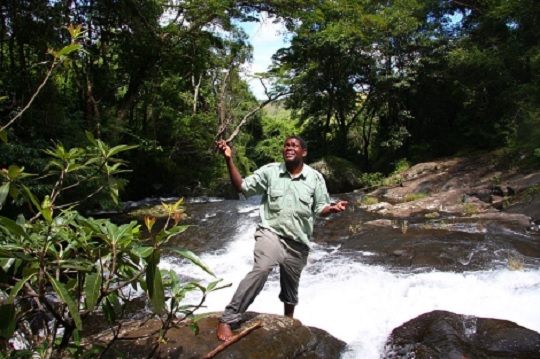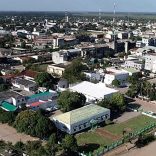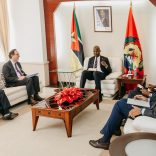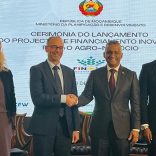Mozambique: Lions grow from brink of extinction to 100 in seven years
Muagura, arboreal witness to the decline and recovery of Gorongosa Park

Lusa / Pedro Muagura
By his own account, Pedro Muagura has planted 45 million trees with his own hands, and 111 million with others, a record that, beyond the spectacular statistics, evidences a witness and important partner in the recovery of the Gorongosa National Park.
The son of a regulo (traditional chief), and councillor in Manica province on the border between Mozambique and Zimbabwe, Muagura grazed oxen and goats, learned by himself about grasses, shrubs and semi-woody plants, and how they related to animal feeding. He harvested fruit in the fields and propagated plants without being taught. He was just a boy then, long before he became Director of Conservation at Mozambique’s most important national park.
He completed all the necessary levels of education while planting, harvesting and replanting until he finally arrived at the Chimoio Agrarian Institute, predictably majoring in forestry, and was rewarded with scholarships in Finland and Tanzania.
From student to teacher, he remembers taking his students to the Gorongosa National Park in the tortuous final years of the civil war in Mozambique to carry out fieldwork, and finding wildlife almost extinct.
To find a monkey could take three or four hours, antelope three or four days, an elephant two weeks. “The students would ask, ‘Is it really a park?’ One would even be reduced to the absurdity of showing them pictures of animals from the park guides while we were right there in the middle of the park, where we were supposed to observe them ‘live and in full colour’.”
About 95 percent of the park’s wildlife was dead, a vivid contrast to its impressive recovery since 2007 under a restoration project funded by US philanthropist Greg Carr and the Mozambican government.
The latest aerial survey of the park, carried out in October 2016, testified to the ongoing recovery of its wildlife, but it is still far from the splendour revealed by a similar survey in 1972.
On the other hand, it bears no relation to the times of war and post-conflict experienced by Muagura and his students. There remained a viable genetic basis however, even on the brink of extinction. “Now, all I have to do is turn my head and I am sure to see antelope and wild boar, but before … .”
Before joining the park, Muagura had reservations about the Gorongosa restoration project, seeing it as a private concession – until a helicopter ride changed his life.
“I saw deforestation of the very worst degree, people cutting trees, burning, doing slash-and-burn agriculture for two years and then changing because soils became impoverished – and there were no reforestation programmes,” he recalls.
It was then that he came on the Gorongosa scene, bringing communities into his personal confidence, and starting to produce and plant trees, two very different things although serving the same goal.
Forest regeneration has been affected over the past two years by the worsening war between government forces and the armed wing of the National Resistance (Renamo) in the vicinity of the park, making inaccessible some 43 nurseries with 100,000 plants each abandoned for safety reasons on the slopes of the Gorongosa mountain range.
Satellite imagery indicates that forest fires persist in the mountain range but not deliberate cutting of trees, keeping alive the hope that reforestation will bring with it the recovery of wildlife also affected by the recent war, despite limitations on circulation, increases in poaching and the reduction of tourist numbers, coupled with one of the worst droughts of the last decades.
In spite of so many setbacks, for Pedro Maugura the restoration of Gorongosa is “an irreversible reality”, reinforced by recent international scientific attention and the profound interaction of the park with neighbouring communities.
“Man is at the centre of the Gorongosa restoration project,” he says, and this is what differentiates the project from practically everything that surrounds it in Southern Africa, where “empirical management is no longer very plausible”.
But nothing is guaranteed, though Gorongosa’s conservation director sees it in “a very positive sense” after the “painful years” of the war. He is only worried that these advances will not be matched in the rest of the country, where protected areas do not even have shoes for their rangers.
“I would weep that others might achieve 5 percent of what is being done here,” he says, while still believing in the “uniform growth” of conservation in Mozambique, because “asymmetries are a danger”.
Not edited: In fact, millions of trees later, persists until today without any preferred, since “each and all have dependence of the others”.













Leave a Reply
Be the First to Comment!
You must be logged in to post a comment.
You must be logged in to post a comment.